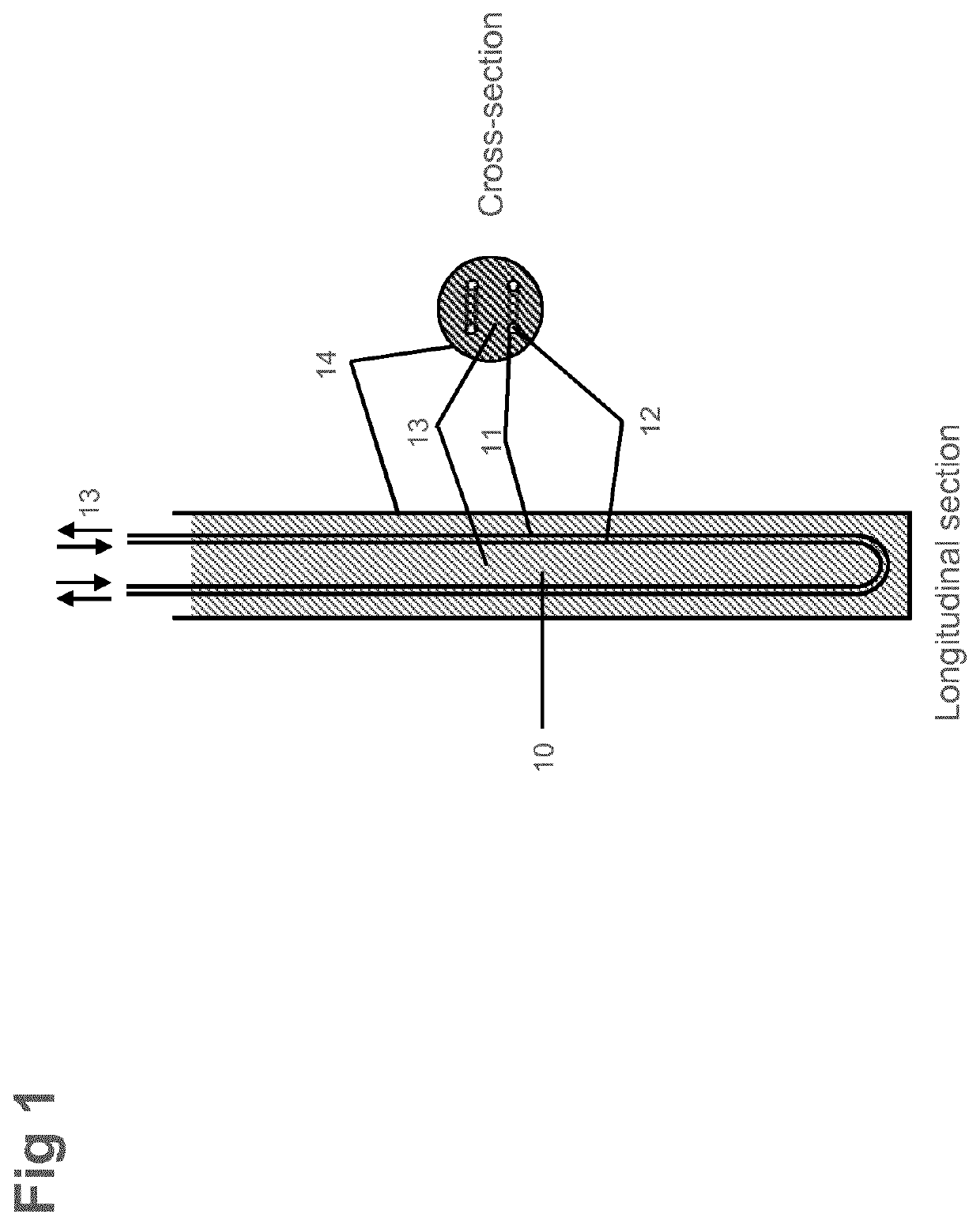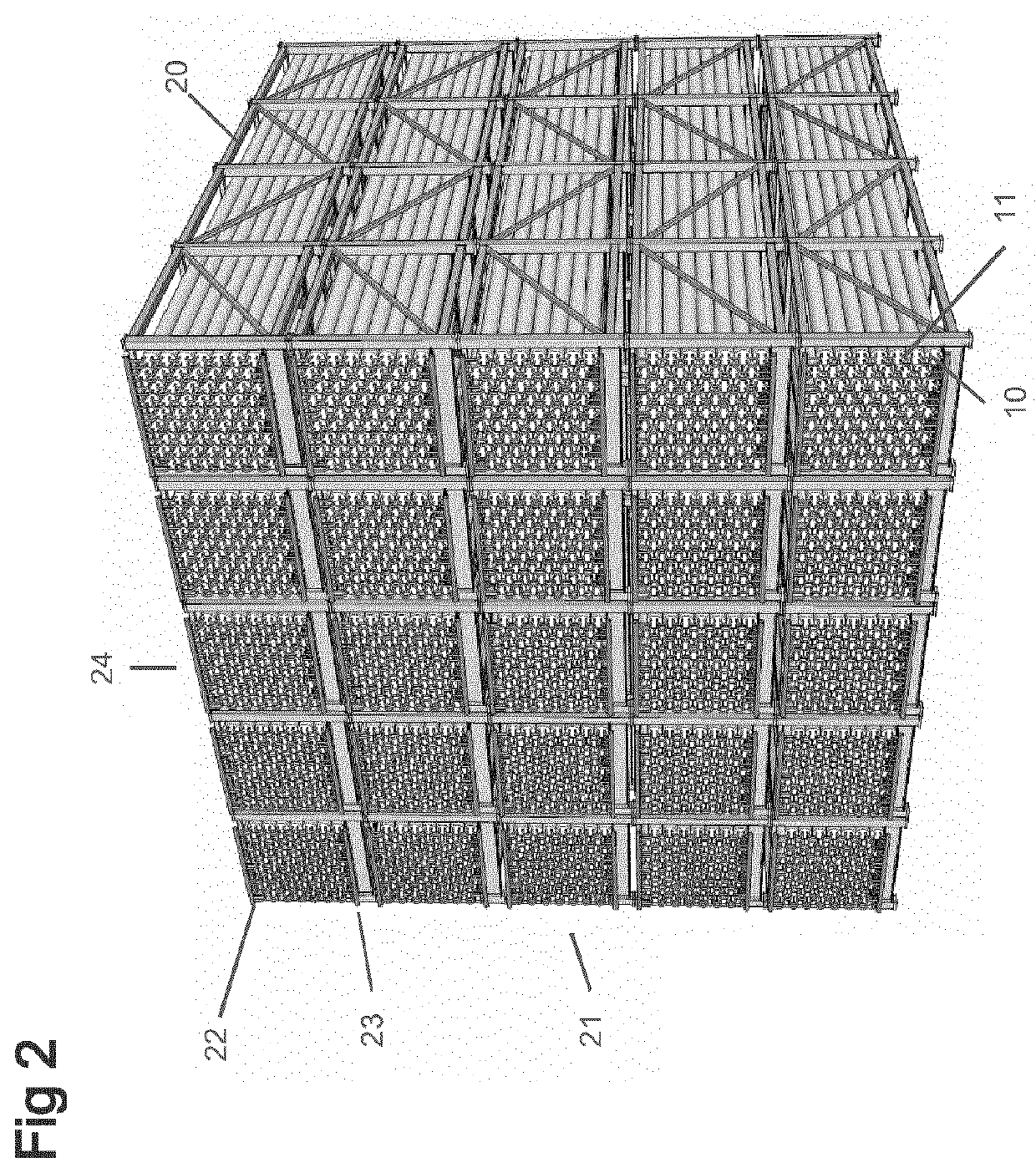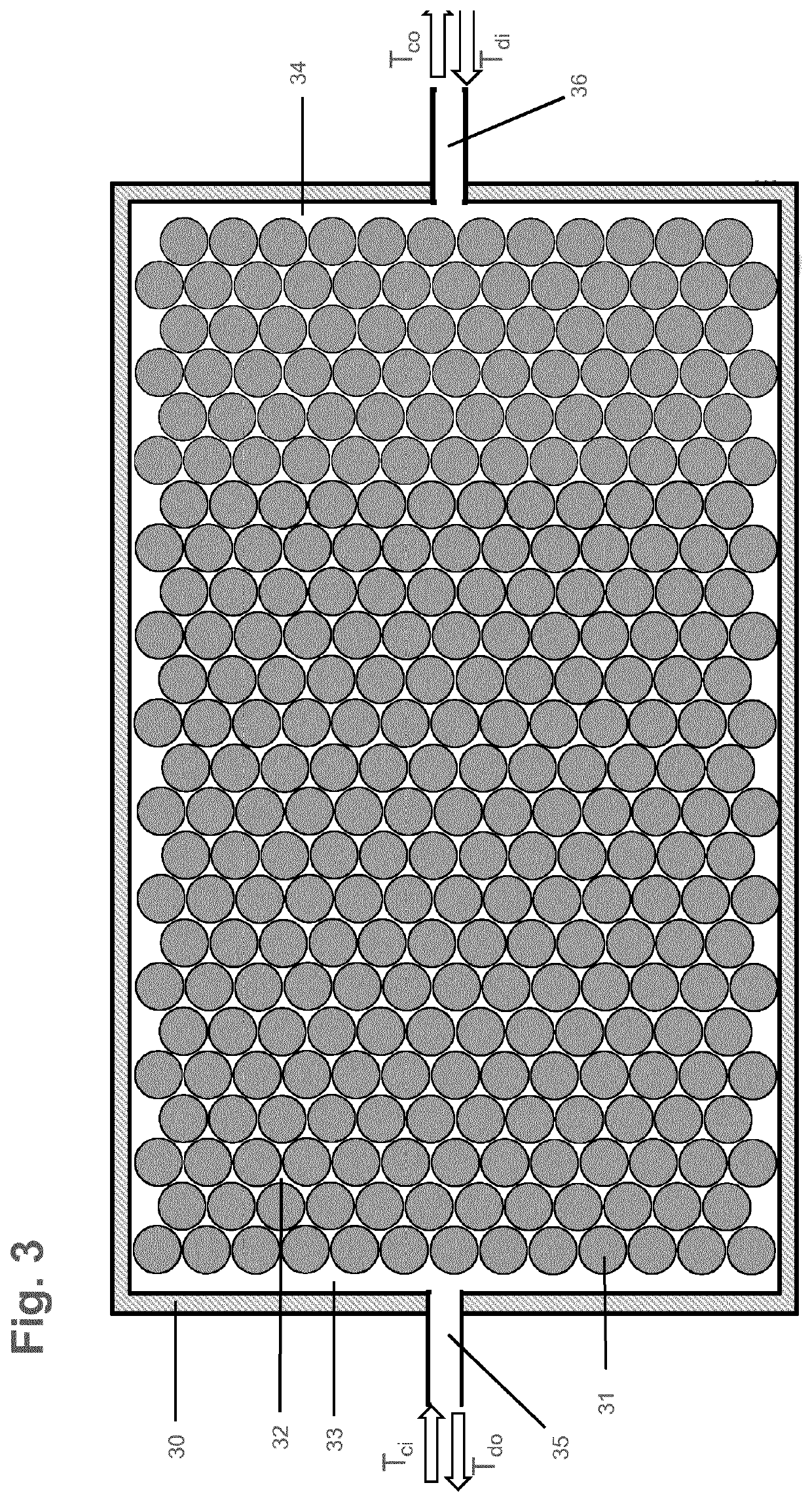Modular thermal energy storage system, improved method of operation of such systems and use of the thermal energy storage system
a technology of thermal energy storage and module technology, applied in the field of module thermal energy storage, can solve the problems of large storage and high cost, and achieve the effect of increasing the storage utilization factor and increasing th
- Summary
- Abstract
- Description
- Claims
- Application Information
AI Technical Summary
Benefits of technology
Problems solved by technology
Method used
Image
Examples
first embodiment
ration
[0081]Two main topological configurations of blocks will now be considered, namely parallel and serial configurations. FIG. 6 is showing, as an example, 5 blocks denoted “a” through “e” in parallel configuration where the HTF flow through each block is controlled by an associated, adjustable valve, (vi1; va1, ve1). If all valves are open the temperature history in each respective block during charging and discharging will correspond to the curves shown in FIG. 5 where the temperature distribution curve for all blocks moves back and forth between the bottom curve up and the upper curve during thermal cycling. The process has to be discontinued when the outflow temperature reaches a pre-defined, acceptable maximum of Tco,max or Tdo,min
[0082]FIG. 7 shows the outflow temperature during charging as a function of time with discontinuation of the process at the time when the outflow temperature reaches its acceptable maximum. As seen, the combined HTF outflow temperature Tco increas...
second embodiment
[0095]The current invention also includes serial configuration of blocks rather than parallel topology as shown before. However, serial flow topology requires somewhat different pipe connections between blocks and a different placing of adjustable valves per block. This is illustrated for a 5-block system in FIG. 12.
[0096]In the simplest case, all bypass valves vi2 are closed. This means that during charging the HTF flows through all blocks in sequence until the outflow temperature from the last block reaches Tco,max. The temperature distribution in the combined length direction then corresponds to the upper hysteresis curve in FIG. 5 which means that the blocks at the end of the flow path will be rather poorly utilized. Similarly, during discharge with reversed flow, the temperature distribution in the total length direction will correspond to the lower hysteresis curve in FIG. 5 with endpoint on the hot side of Tdo,min. This means that the blocks on the left side (a, b, c) will...
PUM
 Login to View More
Login to View More Abstract
Description
Claims
Application Information
 Login to View More
Login to View More - R&D
- Intellectual Property
- Life Sciences
- Materials
- Tech Scout
- Unparalleled Data Quality
- Higher Quality Content
- 60% Fewer Hallucinations
Browse by: Latest US Patents, China's latest patents, Technical Efficacy Thesaurus, Application Domain, Technology Topic, Popular Technical Reports.
© 2025 PatSnap. All rights reserved.Legal|Privacy policy|Modern Slavery Act Transparency Statement|Sitemap|About US| Contact US: help@patsnap.com



